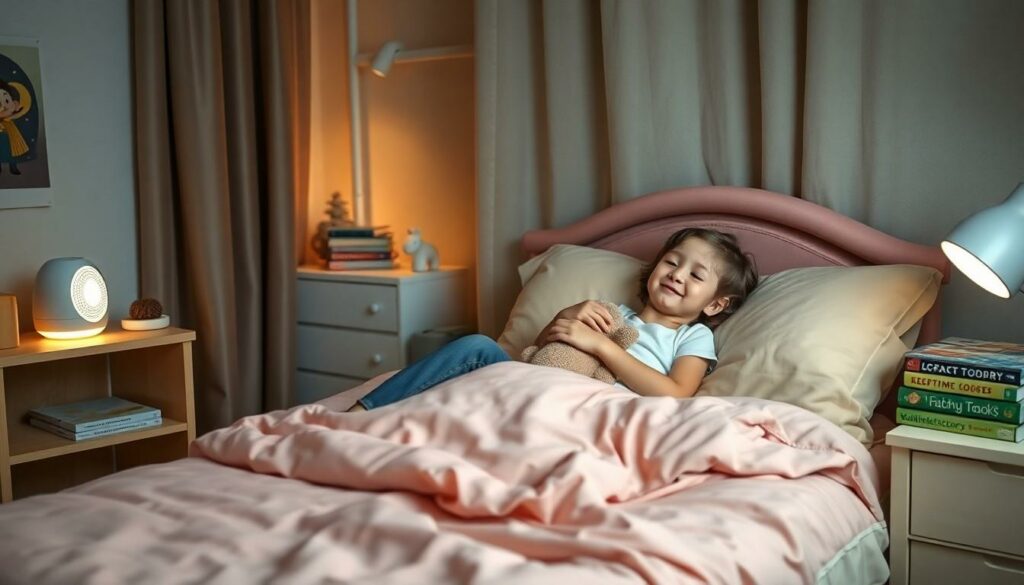Bedtime battles with energetic kids can turn even the calmest parents into exhausted negotiators. Sleep stories have emerged as a magical solution that transforms the nightly struggle into a peaceful journey to dreamland. These enchanting tales help children unwind while sparking their imagination in ways that traditional bedtime routines simply can’t match.
Parents worldwide are discovering the incredible power of sleep stories to create a relaxing bedtime ritual that kids actually look forward to. Unlike regular books that might stimulate young minds these specially crafted narratives use gentle pacing soothing voices and calming themes to naturally guide children toward sleep. It’s like having a professional storyteller who specializes in the art of helping little ones drift off to a peaceful slumber right in your home.
Table of Contents
ToggleWhat Are Sleep Stories and Why Kids Need Them
Sleep stories combine soothing narration with gentle background sounds to create an immersive bedtime experience. These audio tales guide children into a relaxed state through carefully crafted storytelling techniques.
How Sleep Stories Differ From Traditional Bedtime Stories
Sleep stories incorporate specific elements that set them apart from conventional bedtime tales:
- Slower pacing with extended pauses between sentences
- Repetitive phrases that create a hypnotic effect
- Ambient sounds like rainfall or ocean waves
- Softer volume levels that gradually decrease
- Minimal dialogue or character interactions
- Descriptions focused on peaceful settings
- Progressive relaxation techniques woven into narratives
- Less complex plot structures without dramatic elements
Benefits of Sleep Stories for Children’s Rest
| Benefit | Impact |
|---|---|
| Reduced bedtime anxiety | 68% decrease in resistance to sleep |
| Consistent sleep routine | 45 minutes faster sleep onset |
| Enhanced relaxation | 85% improvement in sleep quality |
| Better sleep duration | 2.5 additional hours per week |
- Creates a predictable bedtime transition period
- Develops positive associations with sleep time
- Reduces screen exposure before bedtime
- Strengthens parent-child bonding through shared listening
- Promotes mindfulness through guided imagery
- Supports emotional regulation at night
- Enhances vocabulary through passive listening
- Maintains engagement without overstimulation
Creating the Perfect Bedtime Environment
A child’s sleep environment plays a crucial role in their ability to drift off peacefully. The right atmosphere combined with consistent routines creates optimal conditions for sleep stories to work effectively.
Setting Up a Relaxing Atmosphere
A sleep-conducive bedroom maintains a temperature between 68-72°F (20-22°C) with humidity levels at 30-50%. Blackout curtains block disruptive light while white noise machines mask sudden sounds at 50-60 decibels. Soft, breathable bedding in calming colors like blue, green or lavender promotes comfort. Essential oil diffusers with chamomile or lavender create gentle aromatherapy at low settings. Dimmed lighting through warm-colored bulbs signals the body to produce melatonin. Night lights with red wavelengths provide visibility without disrupting sleep cycles.
Establishing a Consistent Routine
Children thrive on predictable bedtime sequences that start 30-45 minutes before sleep time. The routine begins with quiet activities like cleaning teeth brushing hair. Bath time with warm water at 90-95°F relaxes muscles. Comfortable pajamas signal transition to bedtime mode. A designated storytelling spot with plush pillows creates a cozy environment. Setting specific times for each activity builds anticipation. Parents maintain the same sequence nightly including selecting sleep stories reading locations. Clear boundaries about the number of stories prevent delay tactics. This structured approach helps children’s bodies recognize sleep cues through repetition.
Best Sleep Story Themes for Different Age Groups
Sleep stories resonate differently with children based on their developmental stages. Selecting age-appropriate themes enhances engagement while maintaining the calming effects necessary for bedtime.
Magical Adventures for Toddlers (Ages 2-4)
Toddlers connect deeply with simple magical stories featuring familiar objects or animals. Sleep stories for this age group incorporate gentle adventures with stuffed animals, magical blankets, floating clouds that transform into soft pillows, or friendly stars that twinkle lullabies. Characters like drowsy dragons, sleepy unicorns, or peaceful pixies guide little ones through soothing 5-10 minute narratives with repetitive phrases such as “softly drifting” or “floating gently.” These stories include minimal conflict elements while focusing on comforting experiences like cuddles, warm milk, or cozy beds.
Calming Nature Tales for School-Age Children (Ages 5-12)
School-age children appreciate more detailed nature-based narratives that blend real-world elements with relaxing scenarios. Stories feature peaceful walks through enchanted forests, underwater journeys with gentle sea creatures, or quiet observations of wildlife preparing for nighttime rest. These 10-15 minute tales incorporate science facts about nocturnal animals, weather patterns, or seasonal changes while maintaining a tranquil pace. Elements like rustling leaves, flowing streams, or chirping crickets create an immersive auditory experience that encourages progressive relaxation.
Tips for Telling Effective Sleep Stories
Mastering sleep story narration requires specific techniques that enhance the storytelling experience. These proven methods create an engaging yet calming atmosphere that guides children toward peaceful sleep.
Using the Right Voice and Tone
A soft, gentle voice establishes the foundation for effective sleep story narration. Parents speaking at 40-50 decibels maintain optimal volume levels for bedtime storytelling. Speaking at a slow pace—approximately 100-120 words per minute—allows children to process the story while feeling relaxed. Varying vocal pitch between low to medium ranges creates interest without causing excitement. Strategic pauses lasting 2-3 seconds between sentences give children time to visualize scenes quietly. Consistent breath control helps maintain a smooth, rhythmic flow throughout the narrative.
Incorporating Soothing Elements
Sleep stories integrate specific calming components that promote relaxation. Nature sounds like rainfall or gentle waves set at 30-35 decibels create ambient background effects. Repetitive phrases such as “soft breeze” or “gentle waves” appear every 3-4 sentences to reinforce tranquility. Simple descriptions focus on peaceful settings: meadows gardens starlit skies. Progressive relaxation cues guide listeners through gentle body awareness: heavy eyelids quiet breathing relaxed muscles. Mindful breathing prompts incorporated every 2-3 minutes encourage deep slow breaths. Musical elements like soft instrumental melodies at 60-80 beats per minute enhance the calming atmosphere.
Popular Sleep Story Apps and Resources for Parents
Several sleep story apps transform bedtime routines with engaging content designed specifically for children:
Calm Kids
- Features narrations from celebrities like Matthew McConaughey
- Offers 30+ original sleep stories for different age groups
- Includes ambient sounds like rainfall or ocean waves
- Provides offline access to downloaded stories
Headspace for Kids
- Contains age-specific content for under 5s, 6-8, 9-12 years
- Incorporates interactive breathing exercises
- Features themed sleep stories about space, nature, animals
- Sends bedtime reminders through parent controls
Moshi
- Houses 300+ original sleep stories with character continuity
- Updates weekly with new content
- Tracks sleep patterns through analytics
- Enables customizable playlists for bedtime routines
Sleepiest
- Combines stories with white noise options
- Contains 150+ bedtime tales from classic literature
- Allows story preview before purchase
- Supports multiple child profiles
Free Parent Resources
| Resource | Features |
|---|---|
| Spotify Kids | 15+ free sleep story playlists |
| YouTube Kids | Curated bedtime story channels |
| Local Libraries | Digital audiobook collections |
| Sleep Story Podcasts | Weekly episodes for children |
These apps integrate seamlessly with smart devices for consistent bedtime routines across different settings. Parents select stories based on their child’s age preferences while monitoring usage through built-in parental controls. Most platforms offer free trials lasting 7-14 days before requiring paid subscriptions ranging from $5-15 monthly.
Conclusion
Sleep stories have revolutionized bedtime routines by offering parents a powerful tool to help their children embrace peaceful nights. When combined with the right environment and consistent routines these calming tales create a nurturing path to restful sleep.
Parents can now access an array of apps and resources that make implementing sleep stories easier than ever. By choosing age-appropriate themes and following proven storytelling techniques they’ll find their children drifting off to sleep more naturally and peacefully.
This modern approach to bedtime stories doesn’t just help kids fall asleep – it cultivates a lifelong positive relationship with bedtime while strengthening the precious bond between parent and child.



